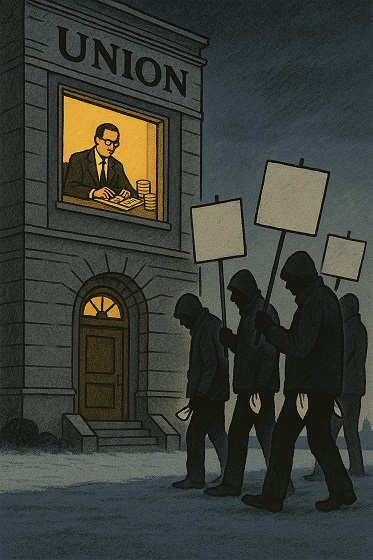National
Trudeau’s Last Stand, Resignation Rumors Swirl as Liberals Face Political Oblivion

With Polls in Free Fall and a Caucus Revolt Brewing, Analyst believe the Liberals will Bet on Identity Politics to Distract Canadians From Nine Years of Failure
If you haven’t already, crank up Whitesnake’s Here I Go Again, because the Liberal Party is hitting all the same notes in their spectacular fall from grace. Rumors are swirling that today Justin Trudeau, the king of platitudes and bad policies, might finally call it quits after nine long years of setting Canada on fire and calling it progress.
So, why is Trudeau on the verge of resignation? Because he’s facing a caucus revolt. Apparently, some of these MPs weren’t thrilled they didn’t get picked for the very last liberal cabinet shuffle, (or maybe it has to do with the latest Anguis Reid polls) which is funny considering they’ve had years to boot this guy. Instead, they’ve spent their time smiling for photo ops and pretending the country isn’t spiraling into chaos. Now, with the next election practically on the doorstep—2025, people—they’re panicking. And it’s glorious to watch.
Let’s set the stage: the latest Angus Reid poll is catastrophic for the Liberals. They’re sitting at 16%—that’s not just bad, that’s “we’re going to lose half our seats” bad. For context, the NDP is at 21%, which is embarrassing enough, but the Conservatives are at 45%. These are Harper-era numbers, folks. Pierre Poilievre isn’t just winning; he’s running victory laps before the race has even started.
So, what are the Liberals going to do? Well, they have three options. Spoiler alert: they’re all terrible.
Option 1: Prorogue Parliament and Hold a Leadership Race
So here’s the Liberals’ desperate move: prorogue Parliament, delay governing, and launch a leadership race to distract Canadians from their failures. It’s a political circus waiting to happen. Every ambitious Liberal—Freeland, Carney, Champagne—will throw their hat in the ring, and none of them are ready to clean up Trudeau’s mess.
But here’s the kicker: the clock is ticking. The fiscal year ends March 31, and without passing Interim Supply, the government literally shuts down. A leadership race takes months, leaving the party paralyzed while Pierre Poilievre dominates the narrative.
A new leader won’t fix anything; they’ll just inherit a sinking ship and take the blame for the inevitable electoral disaster. This isn’t a solution—it’s a slow, painful march toward oblivion while Canadians demand real leadership.
Option 2: Force a Leader Down Our Throats
Here’s where it gets spicy. The Liberals could skip the drama and appoint a new leader outright—someone like Chrystia Freeland. This would be their Kamala Harris moment. They’d toss Trudeau overboard, slap Freeland on the podium, and scream from the rooftops, “Canada’s First Female Prime Minister!” The media would eat it up. They’d call it historic, groundbreaking, revolutionary.
But here’s the first roadblock: Trudeau doesn’t have to go anywhere unless he decides to. That’s right, folks—there’s no magical “kick him out” button in the Liberal Party rulebook. Even if half his caucus is banging down his office door with pitchforks, Trudeau can just sit back, flash his trademark grin, and say, “I’m still your guy.” It’s less of a democratic process and more of a monarchy with better PR.
Now, let’s assume Trudeau does step down because, let’s face it, his ego might be the only thing keeping him there. Enter Chrystia Freeland. The Liberals would roll her out as the savior of their sinking ship.
But here’s the problem: Freeland’s record is awful. She’s been Trudeau’s loyal sidekick for years, backing every bad policy this government has pushed. From the $65 billion budget blowout to fraudulent COVID loans to the carbon tax disaster, Freeland has her fingerprints all over this mess. She’s not a fresh start; she’s Trudeau 2.0, but with less charisma.
And let’s be real, the Liberals wouldn’t run on their record because their record is a disaster. Instead, they’ll double down on identity politics. Freeland will be the face of the campaign, and the talking points will be predictable: “Conservatives hate women. Conservatives will ban abortion. Conservatives are scary.” It’s the same broken record we’ve heard a million times before. It didn’t work in the U.S., and it’s not going to work here. Canadians are smarter than that.
Option 3: Let Trudeau Go Down with the Ship
Now, this might actually be the smartest move. Trudeau built this disaster. He deserves to be the face of the loss. Let him captain the ship straight into the abyss, take the hit in the next election, and then rebuild from the ashes. It’s not pretty, but it’s probably the cleanest way to salvage the Liberal brand long-term.
But we all know the Liberals won’t do this. They’re too arrogant, too desperate, and too addicted to their own spin. Instead, they’ll probably shove Freeland into the spotlight either through a leadership race or just by bypassing the vote and just giving her the reigns and let her ride the Titanic into electoral oblivion, and then act surprised when it all goes horribly wrong.
Trudeau’s Titanic, Freeland’s Fantasy, and the Liberal Pipe Dream
So, here’s what I expect to happen, and honestly? Good riddance to Trudeau. Nine years of turning this country into a woke, bloated, over-taxed shell of what it used to be—his time is up. But let’s be real, the Liberals’ ship hit the iceberg years ago. Now they’re panicking because it’s finally sinking, and they’re trying to figure out who’s going to be the face of the wreckage. Spoiler alert: none of their options are good.
Here’s their play: they’re going to pull the Kamala Harris switcheroo. Replace Trudeau with Chrystia Freeland, slap a big, shiny label on her as Canada’s “First Female Prime Minister,” and hope nobody notices she was the co-pilot of this crash. Freeland has been positioning herself for this moment for years. She’s stood right next to Trudeau, smiling, nodding, and championing the very policies that have made Canadians poorer, angrier, and ready to vote Conservative in record numbers.
But here’s what they don’t want you to know—and here’s what they won’t campaign on: the Liberal record. Why? Because it’s abysmal. Corruption? Check. They handed out COVID loans like Halloween candy, with billions lost to fraud. Deficits? Oh, just a casual $65 billion for 2024. Inflation? A raging fire that’s destroying Canadians’ savings and quality of life. Authoritarian measures? Let’s not forget freezing bank accounts during the Freedom Convoy protests. Big government? That’s not just their record; it’s their entire identity.
And with Freeland at the helm, that’s not going to change. What’s the plan? Double down on identity politics, of course. “Chrystia Freeland: Canada’s First Female Prime Minister.” That’ll be the headline. That’ll be the news cycle. And anyone who questions her? Sexist. Misogynist. Anti-woman. Oh, and here’s the cherry on top: they’ll pivot straight to abortion rights. Why? Because they think it’s the one play that still works. Ignore the economy. Ignore the housing crisis. Ignore the fact that Canadians are literally rationing food. Just scream, “The Conservatives hate women!” and hope it sticks.
If I were a Liberal strategist—and thank God I’m not—I’d tell them to shove Freeland down our throats now. Why? Because the leader of the Titanic isn’t making it out alive. Whoever takes over the Liberal Party right now is going down with the ship, no question about it. Freeland appeals to the Liberal base: the blue-haired Twitter warriors, the downtown elites, the latte liberals. That’s her crowd. But here’s the problem: that’s it. She’s not reaching the working-class Canadians who are sick of paying for Liberal failures. Hillary Clinton has more likability than Freeland, and that’s saying something.
So, yes, they’ll run her on abortion rights, paint the Conservatives as the boogeyman, and pretend Canadians don’t notice they’ve been absolutely terrible for nine years. But let’s be honest—this is a political kamikaze mission for Freeland. The election results in 2025 are going to be catastrophic for the Liberals. And once the dust settles, Freeland is finished. She’ll be the face of the defeat, the one who led the party into the abyss.
And that’s why the real Liberal leadership race starts after the election. Mark Carney, the former Bank of Canada governor, is waiting in the wings. He’s smart enough to know the Liberals need to burn to the ground first before they can rebuild. He’s the only one who can go toe-to-toe with Pierre Poilievre on fiscal policy. If the Liberals want to have a shot at relevance in 10 years, Carney’s their guy. Pair him with someone like Christy Clark as deputy liberal opposition leader, and maybe—maybe—they can reforge the Liberal brand.
But Trudeau? He should go down with the ship. He built this disaster. He’s the reason the Liberals are at 16% in the polls while the Conservatives are at 45%. Let him take the fall. Let the party burn, and let the next generation of upstarts fight over the ashes. Freeland can have her moment, her delusion that she can fix this, but she’s only walking into political oblivion.
So here’s my advice to the Liberals: pour the champagne, play the violin, and let Justin Trudeau captain his sinking ship. And hey, as the ship goes down, maybe Trudeau can declare himself a transgender woman to grab the first spot on the lifeboat—because nothing says progressive hero like skipping the line while the rest of the crew drowns in his mess.
Digital ID
Leslyn Lewis urges fellow MPs to oppose Liberal push for mandatory digital IDs
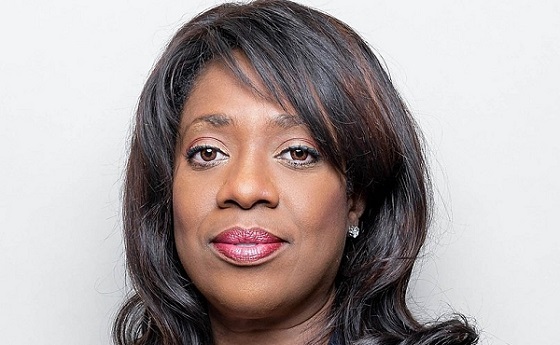
From LifeSiteNews
The Conservative Party MP told fellow members of Canada’s House of Commons that digital IDs lead to increased surveillance by the state that must be kept in check.
One of Canada’s most staunchly pro-life MPs warned Canadians to be “on guard” against a push by the ruling Liberal Party to bring forth Digital IDs, saying that they should be voluntary.
Earlier this week, Conservative Party Member of Parliament Leslyn Lewis told fellow MPs in the House of Commons that increased surveillance by the state must be kept in check.
“Every promise of transparency can become a tool of surveillance if not guided by the principles of freedom that we cherish,” she said.
“If everything of value becomes data, every aspect of our lives can become data to be recorded and monetized. That is why we must be on guard.”
Lewis made the comments in light of news, as reported by LifeSiteNews, that the federal government under Prime Minister Mark Carney will move ahead with digital identification for anyone seeking federal benefits, including seniors on Old Age Security.
Lewis told MPs that Canadians “deserve to know where data are stored, who profits from its use and whether freely opting out of systems including digital ID will remain a right in the digital era, especially when it comes to accessing essential taxpayer-funded services.”
“Without these answers, a trusted artificial intelligence ecosystem becomes a polite euphemism for centralized control,” she warned.
Lewis also noted that citizens should never be “reduced to mere consumers at the end of a bar code,” adding that “Human beings are not data points to be managed.”
“We are souls with a purpose. The future we build must reflect that truth,” she said.
Despite Lewis’s remarks, the government, in a recent note in Carney’s 2025 budget that passed earlier this week, said that changes will be made to the Department of Employment and Social Development Act. The goal is to “enable the delivery of more integrated and efficient services across government.”
As reported by LifeSiteNews, the Canadian government hired outside consultants tasked with looking into whether or not officials should proceed with creating a digital ID system for all citizens and residents.
As per a May 20 Digital Credentials Issue memo, as noted by Blacklock’s Reporter, the “adoption” of such a digital ID system may be difficult.
Canada’s Privy Council research from 2023 noted that there is strong public resistance to the use of digital IDs to access government services.
Nonetheless, Conservative leader Pierre Poilievre sounded the alarm by promising to introduce a bill that would “expressly prohibit” digital IDs in Canada.
Digital IDs and similar systems have long been pushed by globalist groups like the World Economic Forum, an organization with which Carney has extensive ties, under the guise of ease of access and security.
Health
Disabled Canadians petition Parliament to reverse MAiD for non-terminal conditions

From LifeSiteNews
Canadians with disabilities have demanded that legislators stop treating their lives as ‘dispensable’ by banning non-terminal ‘Track 2’ assisted suicide.
Conservative Member of Parliament Garnett Genuis has presented a petition from Canadians with disabilities warning against euthanasia expansion.
During a November 19 session in the House of Commons, Genuis delivered a petition to end Track 2 Medical Assistance in Dying (MAiD) request, which allow doctors to end the lives of those who are not terminally ill but have lost the will to live due to their having chronic health problems.
“The petitioners state that it is unacceptable for Canadians to choose medical assistance in dying due to a lack of available services or treatments,” Genuis told the House of Commons. “This is not a real choice. They point out that allowing MAiD for people with disabilities or chronic non-terminal illnesses devalues their lives. It sends the dangerous message that life with a disability is optional.”
People with Disabilities are Speaking Out On Euthanasia/MAiD
So-called “Track 2 MAiD” has transformed the experience of people with disabilities when accessing the healthcare system.
These petitioners want it reversed. pic.twitter.com/n3izpAQI2T
— Garnett Genuis (@GarnettGenuis) November 17, 2025
Genuis cited a recent article in Le Soleil which recounted the troubling case of a sick Canadian man who was essentially encouraged by a social worker to stop fighting and opt for death by lethal injection.
“That is not compassion. It is a betrayal of our duty to protect human dignity,” he declared.
The petition pointed out that “allowing medical assistance in dying for those with disabilities or chronic illness who are not dying devalues their lives, tacitly endorsing the notion that life with disability is optional, and by extension, dispensable.”
It also pointed out that making MAiD available to individuals with disabilities or chronic illnesses diminishes the motivation to develop better treatments and provide higher quality care for those living with such conditions.
In conclusion, the petition called on the Canadian government to “protect all Canadians whose natural death is not reasonably foreseeable by prohibiting medical assistance in dying for those whose prognosis for natural death is more than six months.”
A few days earlier, on November 17, Liberals responded to the petition by claiming that they have implemented “safeguards” to assess if someone is eligible to receive MAiD.
“These safeguards aim to address the risks associated with diverse sources of suffering and vulnerability, that could lead someone not close to death to seek MAiD,” Liberals wrote. “The safeguards examine whether their suffering results from factors other than the medical condition and whether there are ways of addressing their suffering other than through MAiD.”
However, this is not the first time that Canadians have petitioned to protect vulnerable Canadians from the ever-growing euthanasia regime.
As LifeSiteNews reported in October, Inclusion Canada CEO Krista Carr told Parliament that many disabled Canadians are being pressured to end their lives with euthanasia during routine medical appointments.
Similarly, internal documents from Ontario doctors in 2024 that revealed Canadians are choosing euthanasia because of poverty and loneliness, not as a result of an alleged terminal illness.
In one case, an Ontario doctor revealed that a middle-aged worker, whose ankle and back injuries had left him unable to work, felt that the government’s insufficient support was “leaving (him) with no choice but to pursue” euthanasia.
Other cases included an obese woman who described herself as a “useless body taking up space,” which one doctor argued met the requirements for assisted suicide because obesity is “a medical condition which is indeed grievous and irremediable.”
At the same time, the Liberal government has worked to expand euthanasia 13-fold since it was legalized, making it the fastest growing euthanasia program in the world.
Currently, wait times to receive actual health care in Canada have increased to an average of 27.7 weeks, leading some Canadians to despair and opt for euthanasia instead of waiting for assistance. At the same time, sick and elderly Canadians who have refused to end their lives have reported being called “selfish” by their providers.
The most recent reports show that euthanasia is the sixth highest cause of death in Canada; however, it was not listed as such in Statistics Canada’s top 10 leading causes of death from 2019 to 2022.
Asked why it was left off the list, the agency said that it records the illnesses that led Canadians to choose to end their lives via euthanasia, not the actual cause of death, as the primary cause of death.
According to Health Canada, 13,241 Canadians died by euthanasia lethal injections in 2022, accounting for 4.1 percent of all deaths in the country that year, a 31.2 percent increase from 2021.
-

 Daily Caller2 days ago
Daily Caller2 days agoDemocrats Explicitly Tell Spy Agencies, Military To Disobey Trump
-

 Energy2 days ago
Energy2 days agoCarney bets on LNG, Alberta doubles down on oil
-

 Alberta2 days ago
Alberta2 days agoAlberta on right path to better health care
-
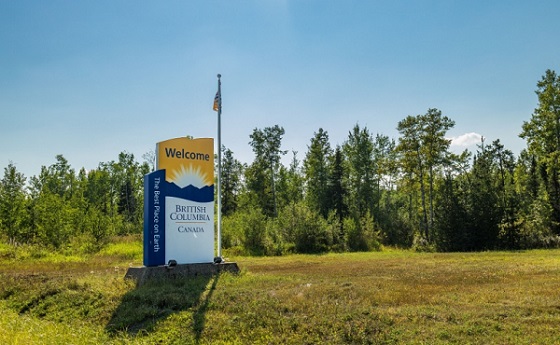
 Indigenous2 days ago
Indigenous2 days agoTop constitutional lawyer slams Indigenous land ruling as threat to Canadian property rights
-

 Daily Caller2 days ago
Daily Caller2 days agoALAN DERSHOWITZ: Can Trump Legally Send Troops Into Our Cities? The Answer Is ‘Wishy-Washy’
-

 Alberta24 hours ago
Alberta24 hours ago‘Weird and wonderful’ wells are boosting oil production in Alberta and Saskatchewan
-
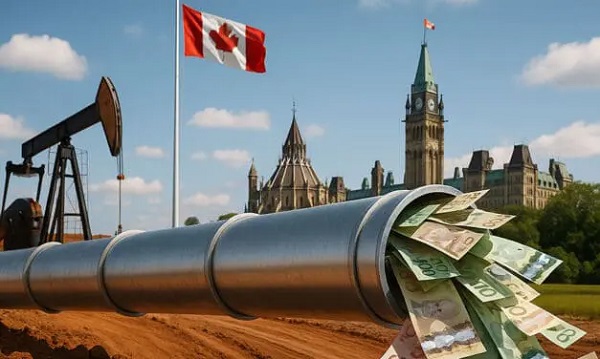
 Alberta2 days ago
Alberta2 days agoCarney government’s anti-oil sentiment no longer in doubt
-
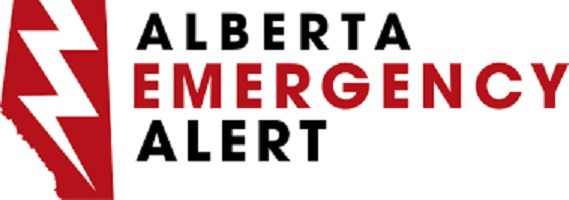
 Alberta2 days ago
Alberta2 days agoAlberta Emergency Alert test – Wednesday at 1:55 PM






